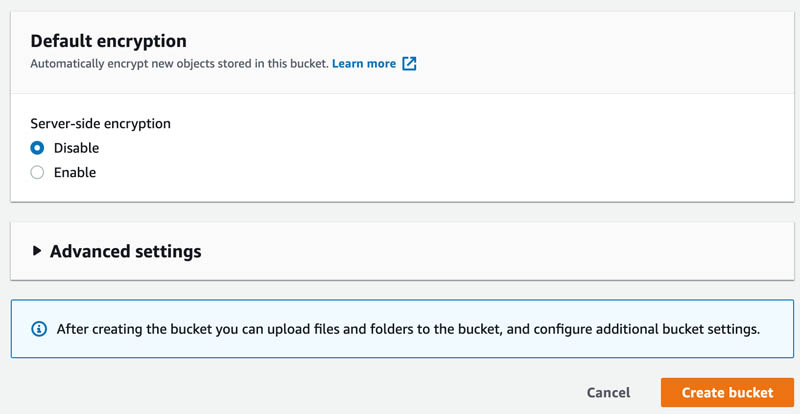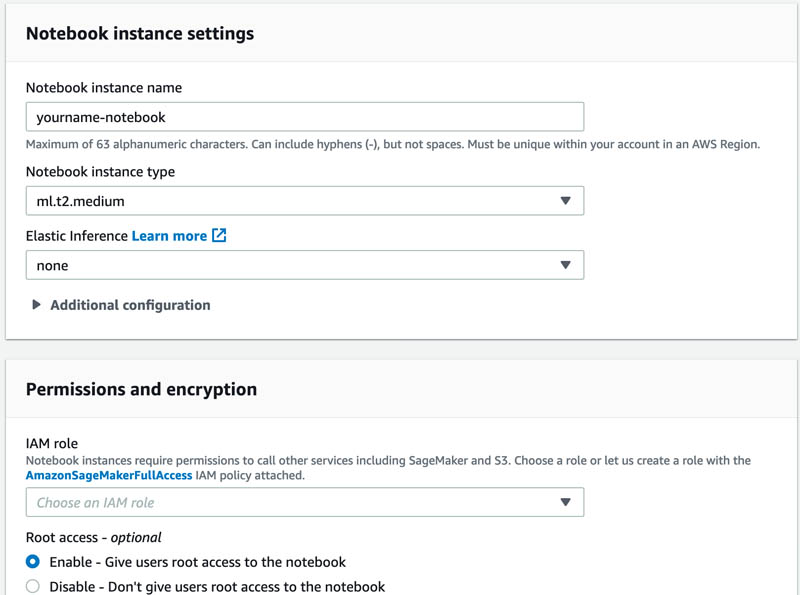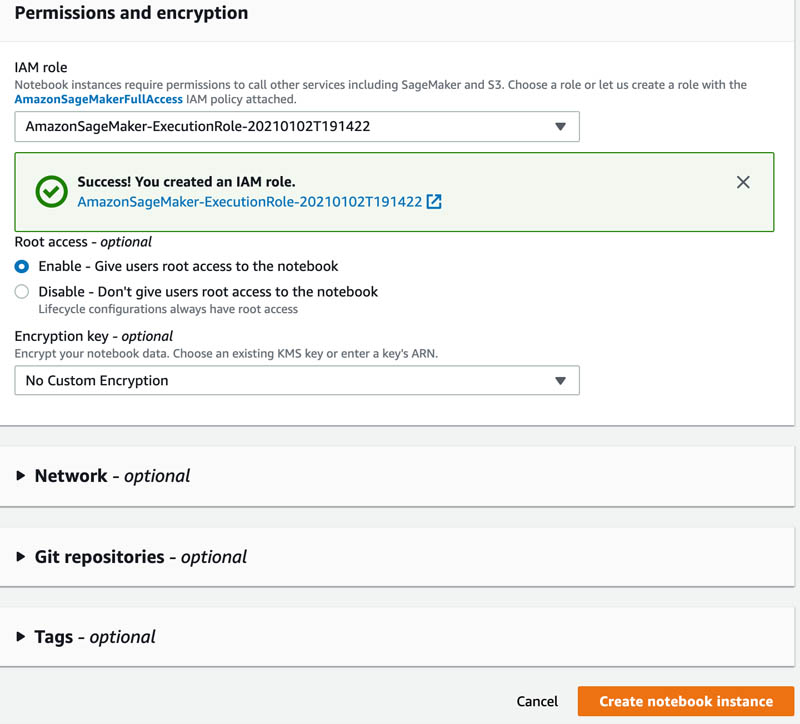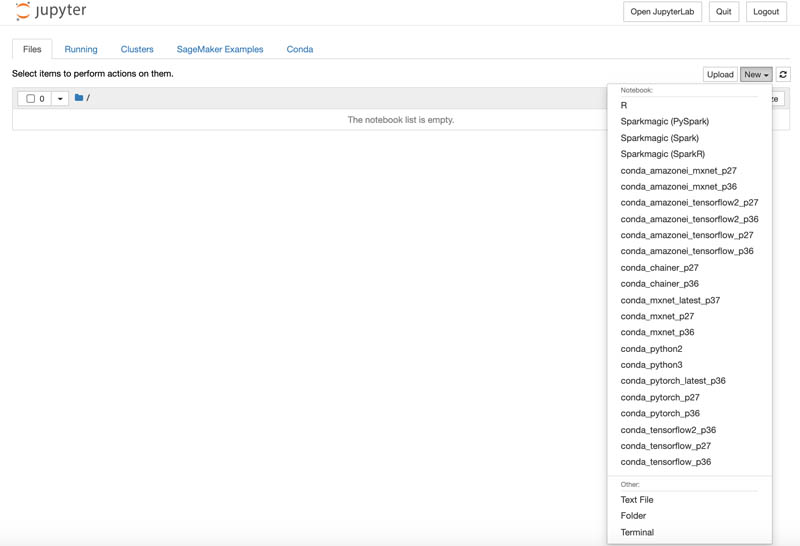AWS Machine Learning Blog
Simplify machine learning with XGBoost and Amazon SageMaker
January 2021: Post updated with changes required for SageMaker SDK v2, courtesy of Eitan Sela, Senior Startup Solutions Architect
Machine learning is a powerful tool that has recently enabled use cases that were never previously possible–computer vision, self-driving cars, natural language processing, and more. Machine learning is a promising technology, but it can be complex to implement in practice. In this blog post, we explain XGBoost—a machine learning library that is simple, powerful, and able to address a wide variety of use cases. We also provide a step-by-step tutorial for running XGBoost on Amazon SageMaker on a sample dataset, showing you how to build a model that’s able to predict whether or not a person will default on their credit card payment.
What is XGBoost?
XGBoost (extreme gradient boosting) is a popular and efficient open-source implementation of the gradient-boosted trees algorithm. Gradient boosting is a machine learning algorithm that attempts to accurately predict target variables by combining the estimates of a set of simpler, weaker models. By applying gradient boosting to decision tree models in a highly scalable manner, XGBoost does remarkably well in machine learning competitions. It also robustly handles a variety of data types, relationships, and distributions. It provides a large number of hyperparameters—variables that can be tuned to improve model performance. This flexibility makes XGBoost a solid choice for various machine learning problems.
Problems and use cases addressed by XGBoost
The three problems XGBoost most commonly solves are classification, regression, and ranking:
- Classification. The goal in classification is to take input values and organize them into two or more categories. An example classification use case is fraud detection. In fraud detection, the goal is to take information about the transaction and use it to determine if the transaction is either fraudulent or not fraudulent. When XGBoost is given a dataset of past transactions and whether or not they were fraudulent, it can learn a function that maps input transaction data to the probability that transaction was fraudulent.
- Regression. In regression, instead of mapping inputs to a discrete number of classes, the goal is output a number. An example regression problem is predicting the price that a house will sell for. In this case, when XGBoost is given historical data about houses and selling prices, it can learn a function that predicts the selling price of a house given the corresponding metadata about the house.
- Ranking. Suppose you are given a query and a set of documents. In ranking, the goal is to find the relative importance of the documents and order them based on relevance. An example use case of ranking is a product search for an ecommerce website. You could leverage data about search results, clicks, and successful purchases, and then apply XGBoost for training. This produces a model that gives relevance scores for the searched products.
Using XGBoost on Amazon SageMaker
XGBoost is an open source library available to download and run almost anywhere, so it is also available in Amazon SageMaker. Amazon SageMaker is a managed training and hosting platform for machine learning workflows. Developers and data scientists use Amazon SageMaker to train and deploy machine learning models without the need to manage any infrastructure. Although you can always bring your own training and hosting containers to the Amazon SageMaker platform, you can also choose to leverage the algorithms and libraries that come with SageMaker, including XGBoost. There are many reasons why you might consider using XGBoost on Amazon SageMaker:
- Out-of-the-box distributed training. Amazon SageMaker with XGBoost allows customers to train massive data sets on multiple machines. Just specify the number and size of machines on which you want to scale out, and Amazon SageMaker will take care of distributing the data and training process.
- Sharded by Amazon S3 key training. Sharded by Amazon S3 key training requires you to partition your data on Amazon S3. This allows Amazon SageMaker to download each partition of the dataset to individual nodes rather than downloading all the data on all nodes. This saves time in downloading the dataset from Amazon S3 and ultimately speeds up training jobs.
- XGBoost Instance Weighted Training. Using XGBoost on SageMaker allows you to add weights to indivudal data points, also reffered to as instances, while training. This allows customers to differentiate the importance of different instances during model training by assigning them weight values.
- Spark integration with the Spark SDK. The SageMaker Spark SDK provides a concise API for developers to interact with Amazon SageMaker XGBoost. Developers can first preprocess data on Apache Spark, then call Amazon SageMaker XGBoost directly from their Spark environment. This spins up the Amazon SageMaker training instances and uses them to train models on the data that was already preprocessed with Spark.
- Easy deployment and managed model hosting. After a model is trained, you need only one API call to deploy it to production. The Amazon SageMaker hosting environment is managed, and it can be configured for auto scaling, which reduces the operational overhead of running a hosting environment.
- Native A/B testing. Using Amazon SageMaker hosting, you can run multiple XGBoost models, each with different weights for inference. The A/B testing helps customers determine the best models for their use case.
Tutorial – Predicting default on credit card payments
In this tutorial, we are going to leverage Amazon SageMaker to train and deploy an XGBoost model that is able to detect whether or not a person is going to default on their credit card payment. We use the “default of credit card clients” dataset1, from the UCI machine learning repository.
To start, we first create an Amazon S3 bucket. This stores our training dataset and the model that Amazon SageMaker outputs after the training job is complete. Next, we will create an Amazon SageMaker notebook instance. The notebook instance provides us with a managed Jupyter notebook environment to download the dataset, preprocess the data, train the model, host the model, and make predictions.
First, go to the Amazon S3 console at https://s3.console.aws.amazon.com/.
Choose the Create bucket button.
In the General configuration section, give your bucket a name, such as “yourname-sagemaker”.

Choose Create bucket.

Take a note of the Region in which you created the bucket, then navigate to the Amazon SageMaker console at https://console.aws.amazon.com/sagemaker/ in the same Region.
Choose Notebook instances.

Choose Create notebook instance.

On the screen that appears, give your notebook a name, such as “yourname-notebook”.
In the IAM role drop-down list, choose Create a new role.

Create the new role by specifying the name of your bucket in the Specific S3 bucket text box. This gives Amazon SageMaker permission to access your S3 bucket.
Choose Create role.

Choose Create notebook instance.

After the notebook is ready, you have the option to open the notebook.
Choose Open Jupyter.

The SageMaker notebook instance comes with various sample notebooks, but in this tutorial, we’ll be authoring a new notebook.
Choose the New button.
Choose conda_python3 to open a new notebook with a Python3.6 environment.

Now that you have a notebook, you can enter code to download and view your dataset, train the model, and make predictions.

Use the Jupyter notebook to enter the following code and complete the tutorial. Press the play button in Jupyter or Shift+Enter to run code in the selected notebook cell.
First, you need to set up your notebook by defining the S3 bucket you’re using, importing the libraries you will need, and getting the Amazon SageMaker execution IAM role from the notebook environment that you will need to access training jobs.
The next step is to download the dataset, which comes as a .xls file.

By reading the dataset we see that it has 30,000 records, and each record has 23 associated attributes to describe features relevant to the credit scores of the person the record represents. The attributes are the following:
- X1: Amount of the given credit.
- X2: Gender (1 = male; 2 = female).
- X3: Education (1 = graduate school; 2 = university; 3 = high school; 4 = others).
- X4: Marital status (1 = married; 2 = single; 3 = others).
- X5: Age (year).
- X6 – X11: History of past payments. Tracked past monthly payment records (from April to September, 2005) are displayed as follows: X6 = the repayment status in September, 2005; X7 = the repayment status in August, 2005… X11 = the repayment status in April, 2005. The measurement scale for the repayment status is: -1 = pay duly; 1 = payment delay for one month; 2 = payment delay for two months… 8 = payment delay for eight months; 9 = payment delay for nine months and above.
- X12-X17: Amount of bill statement X12 = amount of bill statement in September, 2005; X13 = amount of bill statement in August, 2005… X17 = amount of bill statement in April, 2005.
- X18-X23: Amount of previous payment. X18 = amount paid in September, 2005; X19 = amount paid in August, 2005…. X23 = amount paid in April, 2005.
- Y: Did the person default? (Yes = 1, No = 0)
The “Y” attribute is known as the target attribute. This is the attribute that we want the XGBoost to predict. Because the target attribute is binary, our model will be performing binary prediction, also known as binary classification. In this dataset, a 1 in the Y column means that the person previously defaulted and 0 means that they have not defaulted in the past.
Normally, we would use feature engineering to select the best inputs for the model. Feature engineering is an iterative process that often requires experimentation and creating many models to find the input features that give the best model performance. For the purposes of this tutorial, we’ll skip this step and train XGBoost on the features as they are given.
Amazon SageMaker XGBoost can train on data in either a CSV or LibSVM format. For this example, we use CSV. It should have the following:
- Have the target variable in the first column
- Not have a header row
To format our dataset for this, we drop the “ID” column that numbers the rows in the first column and we modify the “Y” column to be the first column in our DataFrame.
Here, we split our dataset into a training, validation, and testing set. XGBoost will train on the training dataset and use the validation set as data to evaluate prediction results as the model is trained. We will make predictions against the testing set after the model has been deployed.
Now that our dataset is ready, we can upload it to Amazon S3 and take a note of its location so that we can use it for training.
XGBoost also has a number of hyperparameters that we can tune to improve model performance. Here, we set values for some of the most commonly tuned hyperparameters. Notice the objective parameter is set to binary:logistic. This parameter tells XGBoost what kind of problem we are solving (classification, regression, ranking, etc.). In this case we are solving a binary classification proble –predicting whether or not a person is likely to default on their credit card payments.
When the training is complete, we’ll see a log of the training. This log contains metrics, such as our training and validation errors and helps us gauge the performance of our model. The training logs are also available in Amazon CloudWatch Logs.
After the model is trained, this deploys our model to Amazon SageMaker hosting. It takes a few minutes to set up the hosting endpoint.
Our final step is to make predictions. We first set up our serializer. This takes numpy arrays (like our testing data) and serializes them to CSV format. We then define a predict function that will take in our testing data as input and run predictions on the data, which is done through the xgb_predictor.predict() function call.

The output is an array with our predictions. The first element of the array is the probability that the person corresponding to the first inputted data row will default on their credit card payments. The array continues with probabilities for all rows in our testing set.
Now that the model is hosted we can start to make predictions about which credit card holders will default on our payments. This allows us to understand the creditworthiness of our customers which can help us better issue credit and predict future payments.
Clean up
To avoid unnecessary charges on your AWS account, delete SageMaker endpoint you created earlier.
xgb_predictor.delete_endpoint()
Conclusion
XGBoost is a powerful machine learning library that is great for solving classification, regression, and ranking problems. Using XGBoost on Amazon SageMaker provides additional benefits like distributed training and managed model hosting without having to set up and manage any infrastructure. If you have a use case that XGBoost can solve, take a look at the sample notebooks:
- Targeted Direct Marketing– predicts potential customers that are most likely to convert based on customer and aggregate level metrics, using Amazon SageMaker’s implementation of
- Predicting Customer Churn– uses customer interaction and service usage data to find those most likely to churn, and then walks through the cost/benefit trade-offs of providing retention incentives. This uses Amazon SageMaker’s implementation of XGBoost to create a highly predictive model.
These notebooks contain examples on how to implement XGBoost, including examples of how the algorithm can be adapted for other use cases.
References
- Yeh, I. C., & Lien, C. H. (2009). The comparisons of data mining techniques for the predictive accuracy of probability of default of credit card clients. Expert Systems with Applications, 36(2), 2473-2480.
About the Authors
 Eitan Sela is a Solutions Architect with Amazon Web Services. He works with AWS customers to provide guidance and technical assistance, helping them improve the value of their solutions when using AWS. Eitan also helps customers build and operate machine learning solutions on AWS. In his spare time, Eitan enjoys jogging and reading the latest machine learning articles.
Eitan Sela is a Solutions Architect with Amazon Web Services. He works with AWS customers to provide guidance and technical assistance, helping them improve the value of their solutions when using AWS. Eitan also helps customers build and operate machine learning solutions on AWS. In his spare time, Eitan enjoys jogging and reading the latest machine learning articles.
 Yash Pant is an Enterprise Solutions Architect with AWS. He helps enterprise customers migrate and architect applications for the cloud, often focusing on machine learning workloads.
Yash Pant is an Enterprise Solutions Architect with AWS. He helps enterprise customers migrate and architect applications for the cloud, often focusing on machine learning workloads.
 Saksham Saini is a Software Developer with Amazon Sagemaker. He did his BS in Computer Engineering from UIUC. He is currently working on building highly optimized and scalable algorithms for Amazon Sagemaker. Outside work, he enjoys reading, playing music and traveling.
Saksham Saini is a Software Developer with Amazon Sagemaker. He did his BS in Computer Engineering from UIUC. He is currently working on building highly optimized and scalable algorithms for Amazon Sagemaker. Outside work, he enjoys reading, playing music and traveling.
 Yijie Zhuang is a Software Engineer with AWS SageMaker. He did his MS in Computer Engineering from Duke. He is currently working on building algorithms and applications for Amazon SageMaker.
Yijie Zhuang is a Software Engineer with AWS SageMaker. He did his MS in Computer Engineering from Duke. He is currently working on building algorithms and applications for Amazon SageMaker.